GTi History Article - VW Classic magazine Nr12 (2016) English Translation
Posted
#1640870
(In Topic #228740)
Old Timer


Just translated this from the German magazine - apologies for some translation errors!
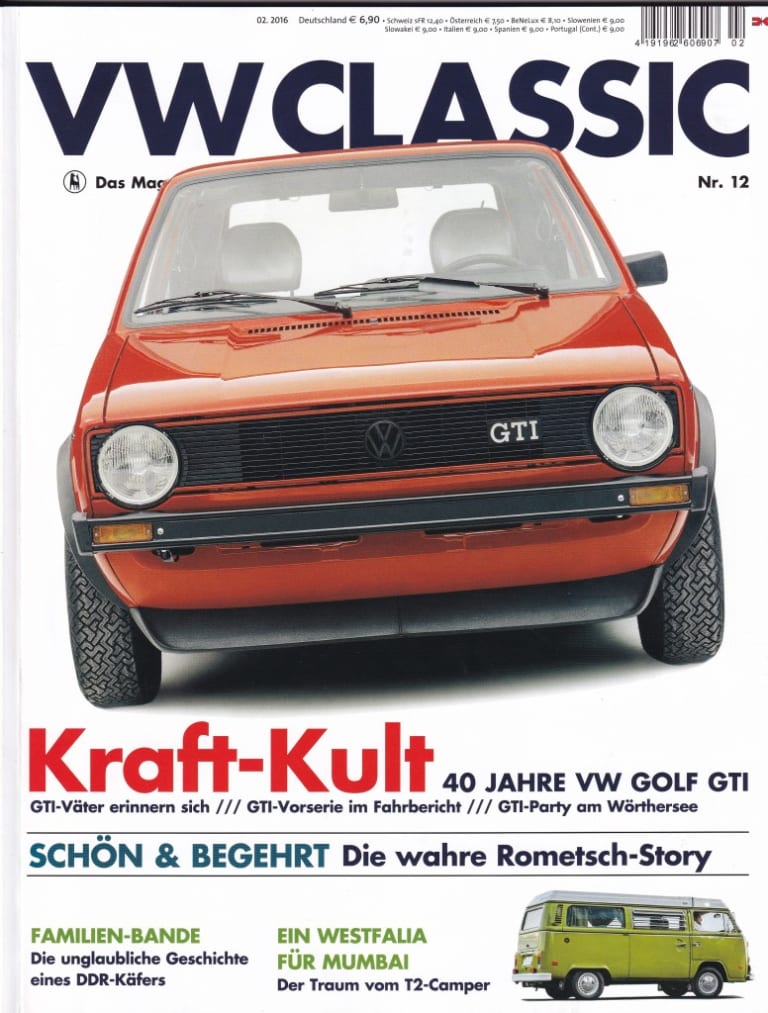
Milestones
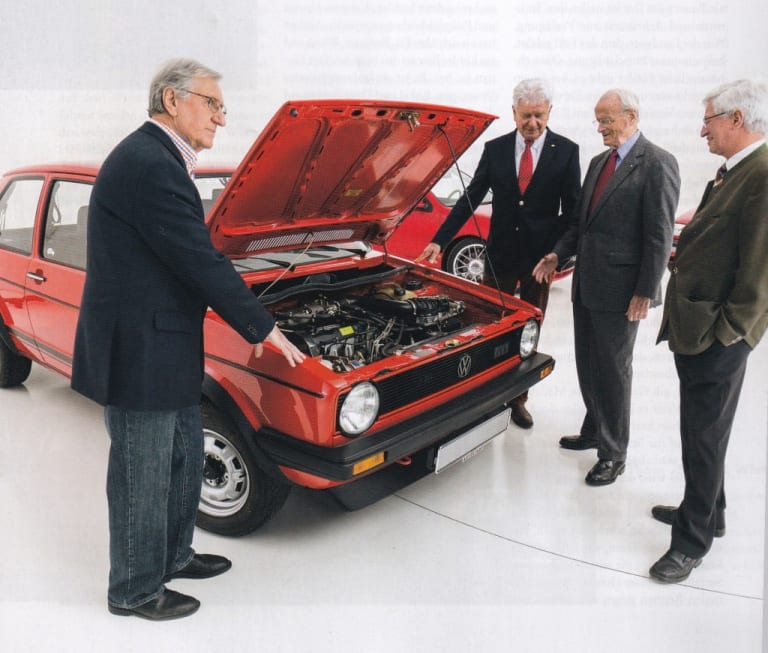
Gran Turismo Incognito
Myth, brand, milestone - that's true, but the highly unofficial developers of the Golf GTI only wanted to let it rip at the right temperature. In 1976 the GTI was allow to roll into the spotlight. Today, 40 years later, the "one" and its three successors are back on the stage - plus four decision-makers who got the GTI going
“The Gti shouldn't be a racing car. but it should contain the genes to be able to get into motorsport! “Anton Konrad
They were driven. From their own sporting spirit and from the knowledge that the VW brand, which had previously been comfortable, needed a good image boost. "Not many, but enough people in Wolfsburg were already thinking about a sports Golf when the Golf was being developed," smiles Anton Konrad finely. The man, then head of the VW motor press, was one of those thinkers. Today, 40 years later, he looks at the bright red Golf GTI generations I, II, III and IV crouching in the photo studio. The studio door opens three more times for special birthday guests: Prof. Carl H. Hahn, CEO of Volkswagen between 1981 and 1992, Herbert
Part of the history of the GTi is that nobody really wanted it
Schuster, Head of Car Overall experiment from 1975 to 1993 and development director from 1994 to 1997 as well as Hartmut Warkuß, chief designer at Volkswagen between 1993 and 2003, are also part of the »party«. It can be cheerful - in contrast to the hour the GTI idea was born, as Anton Konrad recalls. »We were a group of six who wanted a sporty car: Gunther Kühl from motorsport, Horst- Dieter Schwittlinski from branding, Hermann Hablitzel, project manager Golf, Jürgen Adler from interior design, test engineer Alfons Löwenberg and me. The basic prerequisite was: Such a sports golf must be manageable in terms of effort and the group must accept it - if six people outside the group have an idea.
I beg your pardon? Outside, unofficially? Exactly!
In retrospect, the fact that the group of six made a wide berth around every VW official at the time of their secret meeting seems all too understandable.
Shortly before that, internal test engineer Alfons Löwenberg, who had just moved from Opel to Volkswagen, with his internal written post - sent across all hierarchies - suggestion that Volkswagen should have a consistently sporty car, ran against natural granite walls. All reactions to his dispatch of March 18, 1973 were cautious, negative, if not dignified: "Without permission, as always in my life" he sent the letter, which was then strictly hierarchical, was on it. Laden «VW just not … But Löwenberg, once taken the wrong turn, remained convinced of the correctness of his internal navigation system. Based on his previous work at Opel, where he competed the Rally Kadett and other "real" ones without compromise.
He devised competition-oriented racers, first converting a Scirocco, then a Golf into racing car according to his personal taste. The brand managers- -put didn't taste good to the decisive people. They were “riot cars”, locatable >> contemporaries remember. For Lieschen Müller as well as for her ambitious offspring it is undrivable, with racing clutch, lowering, brutally harder suspension and a roaring sports exhaust. once again, Löwenberg single-handedly presented his sports monster, VW Research Director Ernst Fiala. After completing test meters, it roared louder than the Sport Golf's tailpipe than ell? As soon as this could have ever happened. »When I saw that Löwenberg was driving at full throttle into this one-way street and so the basic idea of â€a sporty UI
"load" Vw … But Lowenberg, once taken the wrong turn, remained correct convinced of its internal navigation system. Outgoing from his previous activity with Opel, where he got the Rallye-Kadett and other, real., Uncompromising on competition, devised oriented racers, he first built a Scirocco, then one Golf according to his personal taste to racing rolls. The things the decisive people didn't like it at all. "It was riot cars remember contemporaries. As well as Lieschen Muller as well as for: their ambitious offspring inaccessible, with Racing clutch, lowering, brutal hard suspension and roaring sport-Exhaust. Again, single-handedly Lowenberg presented his Sport to VV Research Director Ernst Fiala.
After completing the test, it roared louder than the Sport Golf's tailpipe ever could.
"When I saw Lowenberg with that Full throttle drove into this one-way street and
so, the basic idea of a sporty one

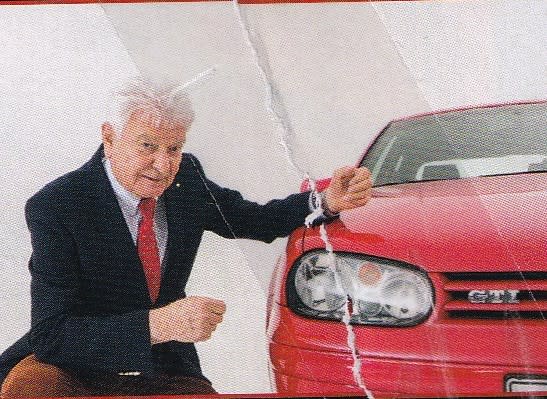
A good eye
“The IV is a car that is consistently designed and yet still has emotion. First of all, I had to get a look ” Designer Hartmut Warkuss
 P2
P2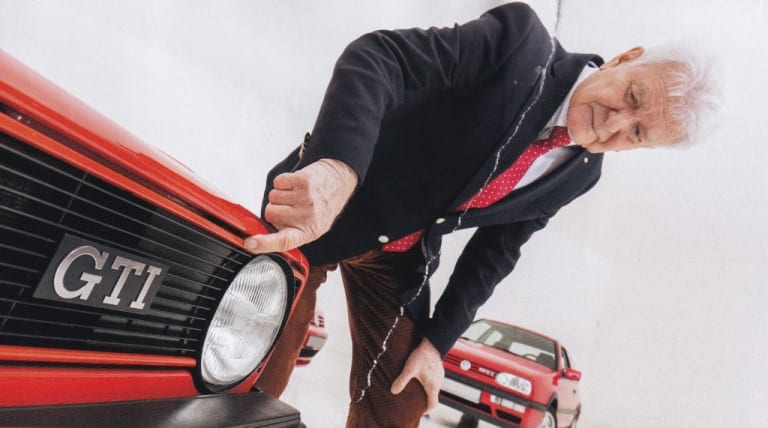
'When I think of GTI, I like to think of this front because it contains this red line. "Hartmut Warkuss, Volkswagen design chief from 199i to 2003 loves the clear red line.
but it inevitably threatened to throw Volkswagens out of the way for everyday use, off the train threatened to throw, I said: "Yep," I'll do something of my own! ", Konrad remembers the decisive moment.
So, the professional communicator with a feel for people, situations and goals formed the said Group of six who from now work incognito over the Sport-Golf
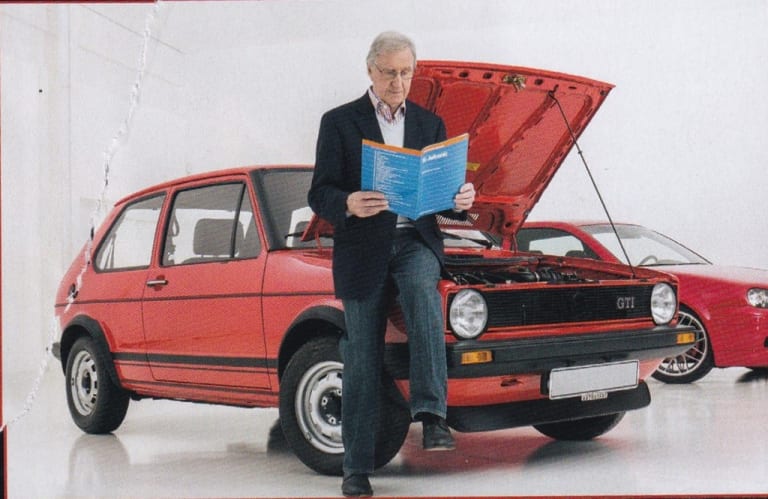

Anton Konrad on the GTI recipe for success: “Both of them worked.
The understatement, the beautiful driving, and the basis for the sports car”
The “conspirators" consistently held their meetings outside of working hours and on the factory premises in Anton Konrad's living room. Löwenberg was included a little later. »We have had a little coffee” …, jokingly puts Konrad into perspective. To be honest, you weren't so alone. Schlaufuchs (clever/smart) Konrad had at a very early project stage VW boss Toni Schmucker (half) inaugurated. "Schmucker listened intently, drew on his pipe and nodded in agreement”.
Even if the various forms of the â sports Golf the idea diverged dramatically among friends Konrad and Lowenberg, there was a creed that ran through the entire project as a red thread and which ultimately turned out to be the red ornamental stripes found on every Golf GTI: We’re refreshing the image of the VW brand, we're building a car for young people!
Hartmut Warkuss, formerly VW chief designer and creator of the Golf IV in 2016, taps the flank: 'The GTI was kind of like, especially for young people, a Porsche Replacement.
"The GTI was the car for young people so to speak, a Porsche replacement, especially for the young people” adds the former VW CEO Prof. Carl H. Hahn. And finds a beautiful picture with a mischievous smile; “It is well known that young people have no money, that's why they drive GTI’s. When you are ancient, you have a Porsche. The average age at Porsche is almost a hundred … " The almost 90-year-old Carl H
P3

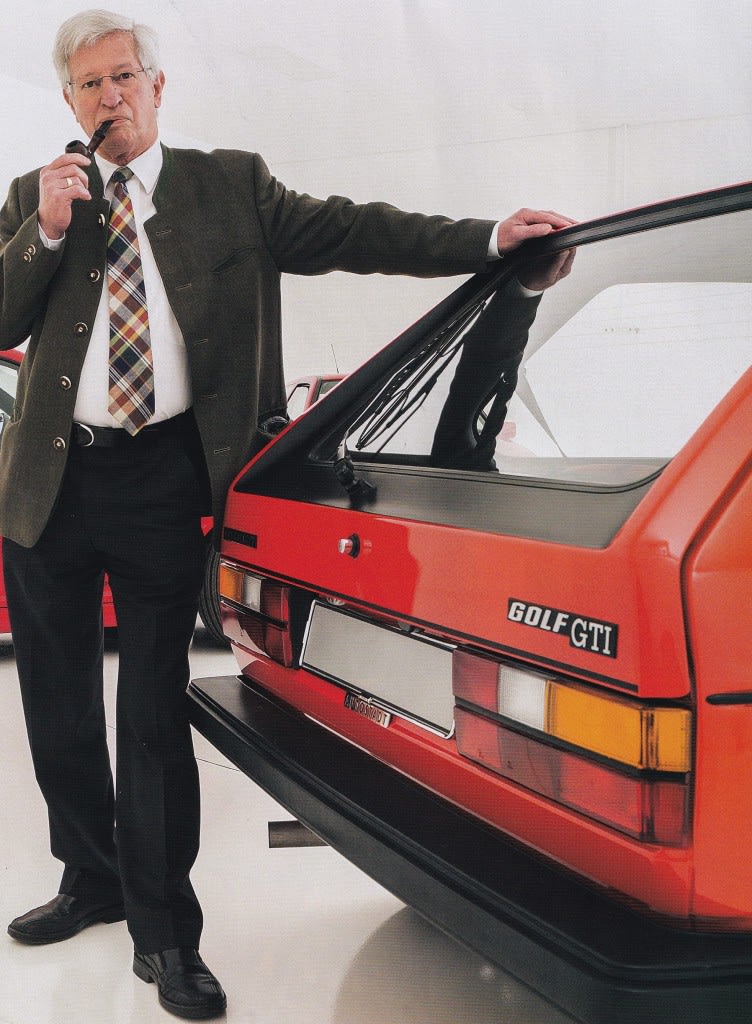
Chassis specialist Herbert Schuster, even 40 years later, always with pipe: “In contrast to the II, we had to improvise a little with the one because a GTi was not designed for construction
P4
We took a lead with the Golf GTI. And when you lead you
lead, it is clear that one constantly improves.
Hahn who at least likes to drive the VW-Porsche 914 to classic rallies, aptly meets an unheard-of affront: that of the very existence of the first Golf GTI towards manufacturers and drivers of powerful touring sedans and classy sports coupes. Never before had a compact car dared to face such a challenge! Because neither a Mercedes 280 S nor the Opel Manta GT / E drove away from the GTI. Porsche 911? It ran faster, but brave GTI drivers followed suit or left the problem behind by overtaking the 911 on the right on the right track. It is thanks to the combined secret forces that this was even possible in series. Hermann Hablitzel, who was the project manager of the promising golf at the centre, was valuable. Anton Konrad, a hobby racing driver and long-time coordinator of the “Formula Vau” racing series, knew from personal experience that young people want a sporty car and that Volkswagen needs one (and especially its young customers!). And Herbert Schuster, the designed head of the VW overall test, known as “the man with the popometer”, was flown to Wolfsburg months before he officially started to work to give the sports golf course elasticity. Schuster apparently succeeded in developing a chassis that managed the perfect balancing act between everyday suitability and sportiness. »Sporty appeal with understated was very important, "says the passionate pipe smoker. And luckily doesn’t knock not his pipe on the fender of the Golf II GTI 16V that he is currently standing next to. Schuster put the first Sport Golf on comparatively modest 5.5-inch wheels with 175/70 HR 13 tires. For this purpose, he equipped the rear axle with a stabilizer. The exhaust system was not left untouched either. It was modified until it was the right performance and sound. Even the unmistakable sound of a GTI I sounds like the contemporary “Sound of Silence” and fits into the specifications of the statement - Schuster still thinks that today: “It was subtle, not exaggerated, like the whole car itself. And yet: You can hear a one-series GTI out of the crowd … «That the reluctant factory acousticians are doing countless tuning

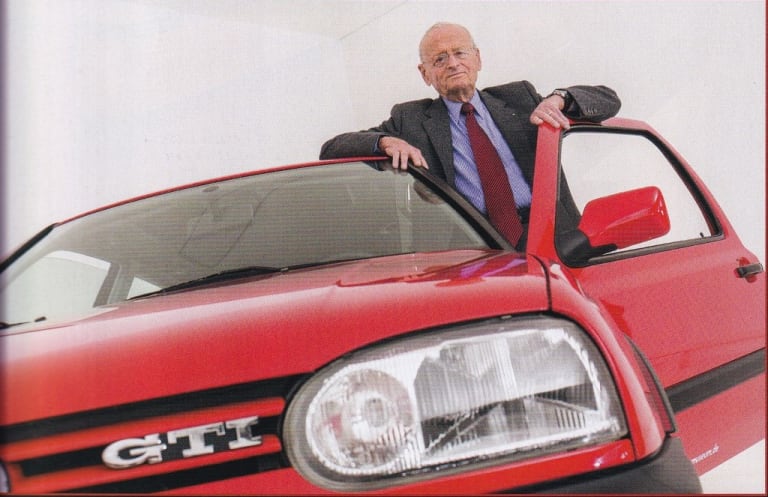
I accelerate, I want to have fun
Carl H. Hahn: "What use is PS in a heavy limousine? They are only good for … traveling. In the GTI they mean fun, entertainment, Enjoyment”
P5
Companies giving the GTI the opportunity to give the GTI a brutal "stove pipe" in the sense of a Löwenberg is not without a certain irony. one of their most beautiful varieties was certainly the legendary “Gillet Super Sound System” … “There were a lot of small racing cars,” Schuster points in, “but that was exactly what the GTI wasn't! Part of his understatement was that you could go shopping with him without losing your teeth. That was a new class that hadn't existed before.” And the whole thing from series parts that VW did not have to have expensively manufactured. Even with the engine, the group of six had … yes, what was it actually? Luck? Coincidence? Or simply the fact that the right people - Ferdinand Piëch and Anton Konrad - were in the right place at the right time. In 1975, the then Audi head of development, Piëch, invited VW press man Konrad to Ingolstadt to do fast laps with the brand-new Audi 80

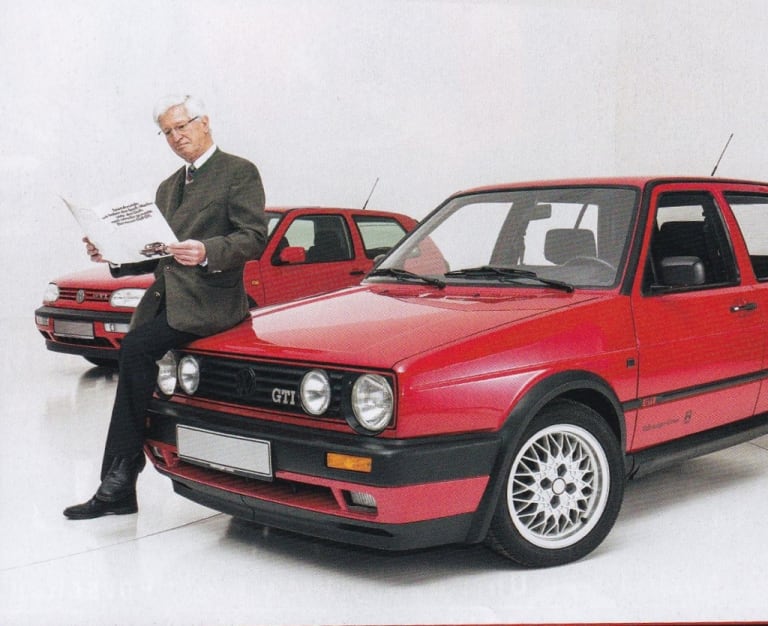
Sports fans
Schaffer, stay with your shoemaker: Herbert Schuster took care of the chassis and Herbert Schafer of the shape of the 2 door Golf
GTE to turn. Its 1.6-liter injection engine with 110 hp electrified Konrad. He dared to let his colleague in on the secret project in Wolfsburg and received Piëch help as well - a spontaneous promise to deliver 5,000 engines, “because that's how many sports Golfs, we officially wanted to build. Afterwards, the dealers scolded us about why we only wanted to sell them so few GTIS …” But how it is in the car life: if you say “one ”, you also have to build“ two ”. But how do you create the successor to a car that has twice given its name to a vehicle class? The Golf for the Golf class, the GTI for the GTI’s class?
“With a 1.6-liter engine and 110 hp, the one-series GTI was extraordinarily good,” says Herbert Schuster. "That is of course put into perspective with the inevitable additional weight of a successor - you have more comfort, more security, so you also have to improve in terms of performance." says Herbert Schuster. " The is of course put into perspective with the inevitably extra weight of a successor - there you have more So comfort, more security, is a must also improve in terms of performance.
" Hm, well: bigger, heavier and more comfortable …?) was the GTI Mk2. been, for whose design Herbert Schäfer is responsible. In terms of performance, on the other hand, there was a problem: Unfortunately, the two-person GTI hadn't gotten any stronger! For the time being, it stayed at 112 HP, of which the initially optional version with a regulated catalytic converter only left 107 HP.
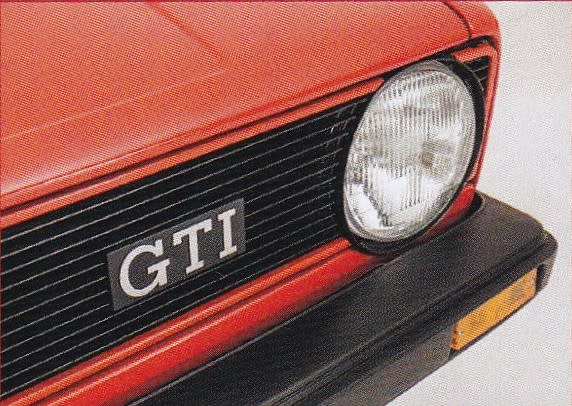

Trademark
Wherever in the world you see a car with a thin, red stripe around the radiator grille, it is certainly a GTI.
p6
A circumstance which, among other things, led to the selection of a one-series Pirelli GTI in preparation for a press test, which was somewhat faster in direct comparison to the MK2 GTI. “The basic idea remained,” says Herbert Schuster. “A car that you can drive fast - even if you can't do it that well!” Laughs the chassis man. »So good-natured chassis, especially at the limit, which announces changes and does not react abruptly. In terms of performance, we then followed suit with the sixteen-valve engine. «139 hp without, 129 hp with a catalytic converter, that fit in the mid-1980s. RV6 engine prototypes had already been in use for the first time. Head of research Prof. Ernst Fiala wanted the engine (later famous as the VR6) in the two-seater GTI, "but we had the G-Lader," recalls Carl H. Hahn. Fortunately, because Opel had the two-litre 16V in the Kadett, which drove away from the heavy MK2 GTI - a trauma for every Golf fan. So come on with more power, the GTI G60 drove the literal performance spiral to a new level and set it up with the ranking between Rüsselsheim and Wolfsburg
Solid, durable, runs and runs: this is also how the golf IV should be
In addition, the GTI G60 was Volkswagen's 160 hp answer to the turbo gust that was blowing through the marketing departments and, above all, the model programs of all manufacturers. »Whereby the G-Lader seemed to us to be the clearly more cultivated variant of the turbo: Without, turbo-hole“, with a steady performance in all speed ranges, ”says Hahn. And is reminiscent of the long tradition of compressor cars from the 1920s and 1930s: "Think of Mercedes, think of Bentley - the compressor was much more prestigious." Sports Golf consumers didn't care. Above all, they wanted one thing: to be fast - or, even better: go even faster. With its price of almost 37,000 marks, the G60 was hardly one of the cars that you thoughtlessly "drove away". This is all the truer of the Rallye Golf, which consistently continued the idea of â€the» Hot Hatch «, as the British say, but not under the MK1 GTI. So, we see: at the latest with the
Generation II, the initial GTI test balloon had become the nucleus for further strengthened Golfs, which, however, were called differently … In 1991, things went round at Volkswagen - after that, the new Golf III GTI saw a direct comparison to the predecessor that appears (suddenly …) One can miss the clarity of the body in the sense of clearly demarcated contrasts between surfaces and edges. The “three” “flows” to a certain extent, which the then chief designer Schäfer had explicitly ordered. Schäfer wanted Herbert away from the beads and edges, that Research Director Prof. Ernst Fiala - nickname: »Sicken-Ernst« - favoured so much. With Fiala's departure in 1988, Schäfer had one less influential critic - the journalists, however, found the Golf III to be a GTI with 2.0 litres and 115 PS only moderately in the new design. Sure, the threesome didn't do anything but didn't really get a bad profile.
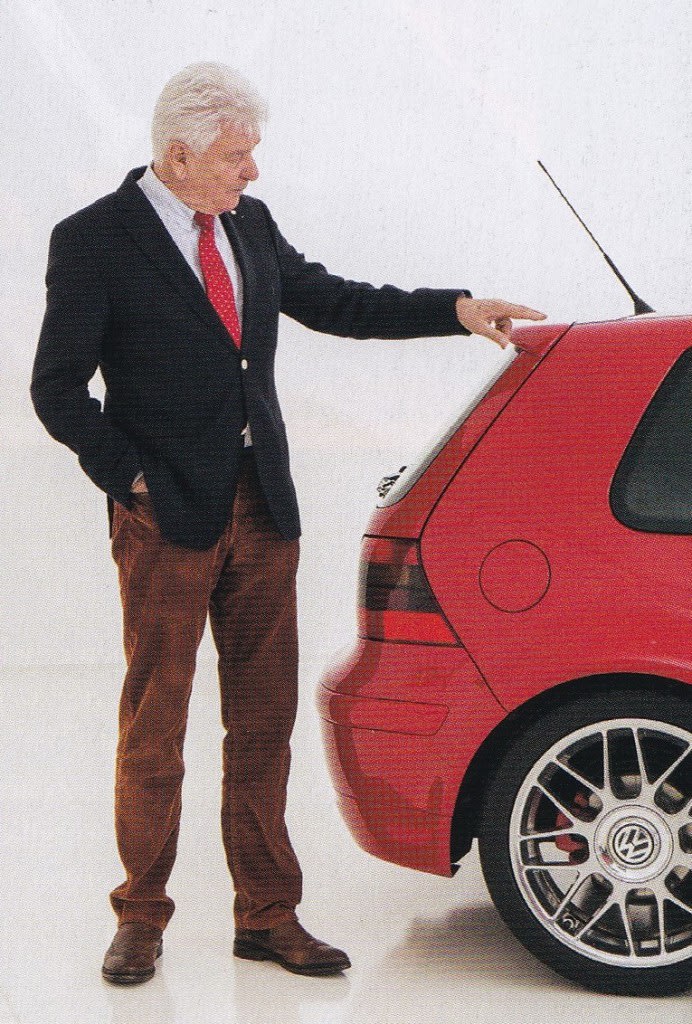

Hartmut Warkuss on the Golf IV GTi:” My favourite subject is clearly the ‘banana;’ the shape of the c post. It was discussed extensively
That was a lot of disaster, and you no longer won the "Golden Crankshaft" with it, especially since the Golf III was also heavier. “An excellent car with pioneering equipment,” says Carl H. Hahn, “with power steering, double airbags and ABS. “He's right, and as a former CEO you have to say that. That changes little in the restrained sportiness, which in turn only wanted to succeed with the 16V with now 150 hp - or the GTI TDI. This was only offered between 1996 and 1997, as a special model "20 Years GTI".
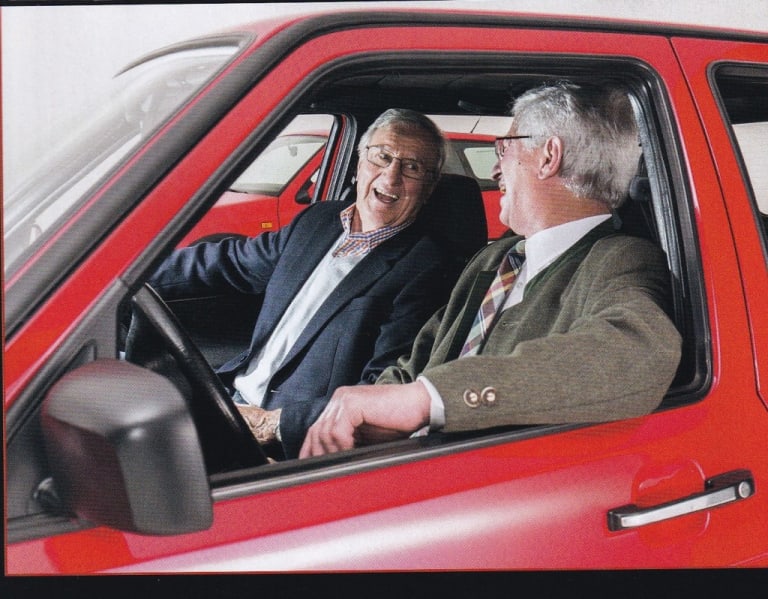
 And nobody noticed
And nobody noticedNobody intended to secretly build sport Golf! Yes, the two were cheerful gentlemen here! Anton Konrad (1st) and Herbert Schuster acted without orders.
P8
As a new-fangled self-igniter offspring he dared to deliver 45 Newton meters more torque than the GTI 16V petrol engine! Yes, it was clearly modern times when the GTI, originally the most powerful VW driving machine, seemed to pale a bit. Especially since the Golf III. People shouted: So much horsepower in such a small car! GTI, despite renewed sporty red colour accents, threatened to become visually more confusing. The GTI was submerged in the mass of the Golf III, which consisted of quite a few special models.
The slightly reduced GTI colour concept seemed to have resulted in too much understatement in the little contoured »Three-er«. “Yes, it was probably a little too little,” describes a contemporary witness from VW design at the time with a wink. And then there was also the new Golf VR6. It turned out to be significantly more top-heavy than its GTI brothers light-footed, but no less prestigious. In addition, it was also marketed as a dynamic model, less than a powerful, sophisticated compact car - which further relativized the Nimbus GTI. “I had to go to the headlights first, I never really liked the look of the Golf III”, says Hartmut
The people shouted: So much horsepower in such a small car!
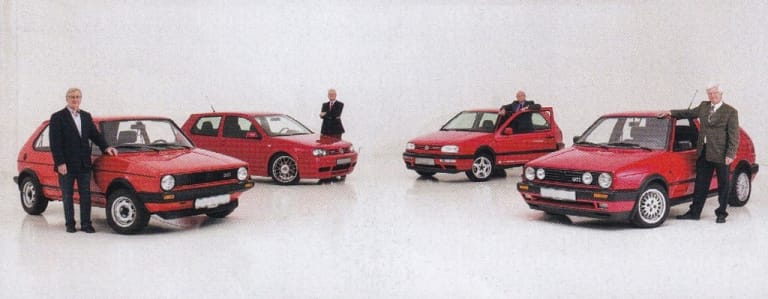
Generation Golf
Four men and one red: exclusively for VW Classic, the makers, followers and keepers of the GTI met in Wolfsburg. Many thanks and congratulations
Warkuss, standing between "his" Golf IV GTI and the "Dreier". His gaze goes back and forth, finally getting stuck on the foursome, his left hand making circular movements in the air: “The Golf III somehow squinted, so I thought two large lights and two lamp bodies arranged one above the other didn't work well. "Then Warkuss approaches and traces the outer contour of the Golf IV light unit with his finger:" Like a belt drive, you see? And the lights are like the cogs in the wheel. “As is the case with art and design: If someone comes along who was or at least can explain it, it becomes understandable. However, the amusing fact is that the headlights of the Golf III have the same basic idea of â€a belt Drive had been to reason
Warkuss laughs and waves him off: That's the way it is in life … on the GTI's 40th birthday, it becomes clear: The accusation that is still often made with the Golf IV GTI, which is still formally strong, is on closer inspection to put into perspective. "They always say that the GTI was only an option on the four-wheeler," Warkuß knows. The predecessor was already available as gasoline and diesel, this tradition goes back to the origins, only that it was still allowed to appear independently as GTD in generations I and II, apart from that: four diesel and seven gasoline engines felt a little at random, but you could even order a whopping 2.3 litres with five cylinders (VR5 or V5) from the »Four-er« - performance packages that immediately make the abbreviation »GTI« appear in the mind's eye, The harmonious overall shape of the Golf IV continues in the interior design, high-quality materials, ergonomic cockpit,
And sets itself high-quality materials, ergonomic cockpit, appealing design. “That was a particular requirement at the time, a centre console oriented towards the driver, similar to that of BMW,” says the former head of design, who still likes the powerful, accentuated character of the C-pillar. As a »banana« it has entered the Walhalla of car design. In this context it should be mentioned that the Golf IV served as the starting point for the design of the current Golf VII. “The Golf IV still does everything right today,” nods Anton Konrad, while his gaze gropes over the surfaces of the GTI Generation IV, “simple and timeless. A great car,” “None of them look old,” says Carl H. Hahn, looking around. Warkuss, Schuster and Konrad almost thanked them for the compliment they supposedly intended, when Konrad laughed and made an inviting gesture: "Let's go have a little coffee …" Let's see what's next …
'Thank you very much to the team
of the Autostadt depot in Wolfsburg for
Coffee, cake, light and location!
1983 Golf GTi Campaign Edition, Diamond Silver
http://vwgolfmk1.org.uk/forum/index.php?page=topicview&id=projects%2Fyour-mk1-golfs_2%2F-tag-1983-campaign&redirected=1#post_1551531
http://vwgolfmk1.org.uk/forum/index.php?page=topicview&id=projects%2Fyour-mk1-golfs_2%2F-tag-1983-campaign&redirected=1#post_1551531
0 guests and 0 members have just viewed this: None.









